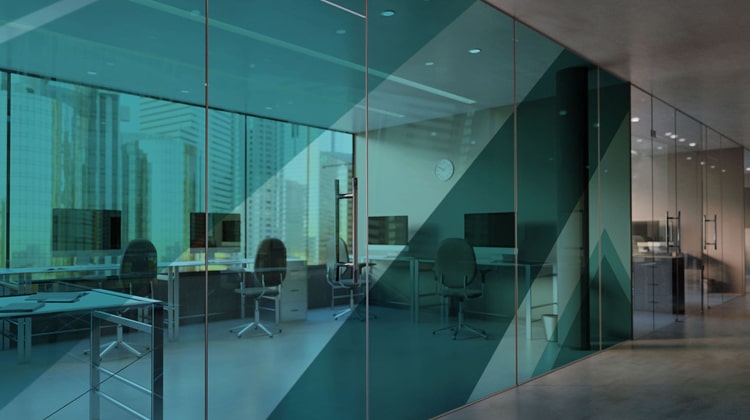Companies look to analyze the incremental costs of production to maximize production levels and profitability. When evaluating a business segment’s profitability, only relevant incremental costs tied directly to it are considered. Differential costs are typically variable costs, meaning they can change based on the volume of output or other activity levels. Fixed costs, on the other hand, often remain constant regardless of the decision taken, so they are not usually considered in differential cost analysis (unless the decision could change the level of fixed costs). From the perspective of a production manager, differential costs are pivotal in determining the optimal production level. For instance, if producing an additional unit costs more than the revenue it generates, the company might decide against increasing production.
Operational managers use this information to determine the cost-effectiveness of production adjustments, such as increasing output or introducing automation. Discerning between avoidable costs and sunk costs is not just differential cost formula an exercise in terminology but a fundamental aspect of effective financial stewardship. By focusing on costs that can be controlled and disregarding those that cannot, businesses position themselves to make more rational and profitable decisions. For example, a restaurant considering renovation must weigh the avoidable costs of temporary closure against the potential increase in future revenue, while disregarding the sunk costs of the original decor.
Types of Differential Costs
- By comparing the cost differences among available options, companies can forecast the potential profits or losses that come with each decision.
- In the realm of marketing, the efficacy of one’s strategy is often measured by the return on…
- In this scenario, the company would save $5,000 by purchasing the component, making it the preferable option.
- The incremental revenue of Rs. 10,000 is much more than the differential cost of Rs. 3,000, it will increase the profit by Rs. 7,000.
Calculating these costs involves analyzing variable expenses, such as raw materials and direct labor, tied to increased production. By understanding incremental costs, companies can fine-tune efficiency, assess the profitability of business segments, and make informed production decisions. Fixed costs remain constant regardless of the level of production or business activity. These costs do not change in the short term and include expenses such as rent, salaries of permanent staff, and depreciation of equipment.
How Does Understanding Incremental Costs Help Companies?
Product Y, on the other hand, requires $1,500 in materials and $800 in labor for the same quantity. If the company has a limited budget and must choose which product to produce, the differential cost analysis would focus on the cost differences between producing X and Y, which are $500 in materials and $300 in labor. Short-term and long-term costs can differ significantly, and understanding this temporal dimension is essential for accurate decision-making. For instance, a decision that appears cost-effective in the short term may not be sustainable in the long run. Therefore, businesses must consider the duration over which the costs will be incurred and the potential for changes in cost structures over time. Businesses use differential cost analysis to make critical decisions on long-term and short-term projects.
Where Are Incremental Costs Relevant?
Differential cost, also known as incremental cost, refers to the difference in total costs between two alternative decisions or courses of action. It is a vital concept in managerial accounting and financial decision-making, helping businesses evaluate the financial impact of choosing one option over another. Understanding differential cost enables businesses to make informed decisions regarding pricing, production, investment, and other operational activities. This guide explores the concept, examples, importance, calculation methods, and applications of differential cost. Differential cost, often referred to as incremental cost, is a cornerstone concept in managerial accounting and economic decision-making. It represents the difference in total cost that will arise from the selection of one alternative over another.
What Are the Uses of Differential Cost in Business?
These qualitative benefits often justify higher differential costs when viewed from a broader business perspective. For long-term decisions involving significant differential costs spread over multiple years, discounting future cash flows to present value provides a more accurate comparison. This becomes particularly important in capital investment decisions where equipment purchases, installation costs, and ongoing operational expenses occur at different times. While fixed costs remain constant within a relevant range of activity, they can become differential when decisions push operations beyond normal capacity limits or involve significant strategic changes. This concept often surprises students who assume fixed costs are always irrelevant to decision-making. Essentially, differential cost serves as an effective strategy for choosing between multiple business options.
Differential cost refers to the difference in costs that arises when an organization decides to change business strategies or operational decisions. Differential cost, also known as incremental cost, is important as it plays a pivotal role in decision-making processes within businesses. It’s worth noting that while differential cost is a key factor in such decisions, it’s not the only one. The company might also consider factors like quality control, speed of production, the reliability of the third-party manufacturer, and more. The differential cost of outsourcing vs. in-house production is now $1,000 ($12,000 – $11,000).
In the pursuit of a fulfilling future, the concept of time investment emerges as a pivotal… But, there is a need for special tools costing ₹ 600/- to meet additional orders’ production. In the case of ABC Company, moving to television ads and social media marketing exposes the company to a broader customer base. If the company earned $10,000 using the current marketing platforms, moving to the more advanced advertising platforms might result in a 40% revenue increase to $14,000. The exact layout of the incremental analysis depends on the decision being analyzed.
For example, a company might use differential cost analysis to forecast the impact of a potential tariff on imported goods, allowing it to explore alternative sourcing options and mitigate financial risks. In practice, businesses often use both differential and incremental cost analyses to gain a comprehensive understanding of their financial landscape. While differential cost analysis provides a broad view of the financial implications of different strategic options, incremental cost analysis offers granular insights into the specific costs of scaling operations. By integrating both approaches, companies can make more informed decisions that balance long-term strategic goals with immediate operational needs. Financial analysts, on the other hand, might use differential cost analysis to assess the viability of a new investment project. They would compare the expected incremental revenues against the incremental costs to determine if the project should proceed.
- In the realm of personal well-being and corporate prosperity, meditation products stand as pivotal…
- Consider an automotive parts manufacturer deciding whether to continue producing brake pads in-house or buy them from a supplier.
- From a strategic standpoint, CEOs and CFOs utilize differential cost analysis to shape long-term business strategies.
- This methodology involves identifying the specific costs and revenues that are relevant to the decision at hand, and excluding any irrelevant or sunk costs.
- It’s a strategic process that requires careful consideration, but when executed effectively, it can lead to significant improvements in profitability and competitive advantage.
By focusing on the incremental changes, companies can make informed decisions that align with their financial goals and strategic direction. This analytical approach is not just about cutting costs but also about optimizing resources to achieve the best possible outcome for the business. It’s a dynamic tool that adapts to the ever-changing business environment, offering clarity amidst the financial complexities that modern businesses face.
Mixed Costs
Once relevant costs are identified, the next step is to quantify these costs accurately. This often involves gathering data from various departments within the organization, such as procurement, production, and finance. Advanced software tools like SAP or Oracle can facilitate this process by providing integrated data management and real-time cost tracking. These tools help ensure that the data used in the analysis is both current and comprehensive, reducing the risk of errors that could skew the results. Additionally, using spreadsheet software like Microsoft Excel can aid in organizing and calculating differential costs, allowing for easy manipulation of data and scenario analysis. For the company to know if the new selling price is viable, it calculates the differential cost by deducting the cost of the current capacity from the cost of the proposed new capacity.
An example is when a company purchases a machine that becomes obsolete within a short period of time, and the products produced by the machine can no longer be sold to customers. The telecom operator currently spends $400 on newspaper ads and $100 on maintaining the company’s website every month. The marketing director estimates that it will spend approximately $1,000 on television ads every month.







